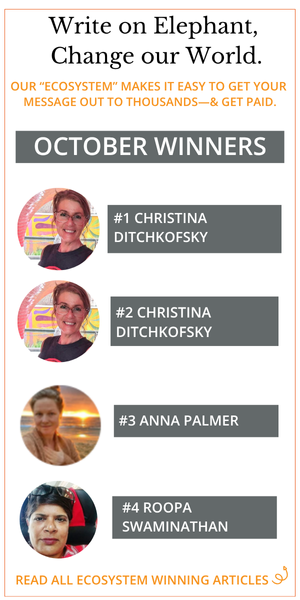View this post on Instagram
Everything you deem as “reality” is being sourced from three pounds of gooey, gray matter hanging out in your skull.
The brain is such a fascinating organ, and the more I learn about it, the sexier it gets.
I’ve been writing about metaphysical and spiritual topics for a long time, but it didn’t truly come together for me until I started learning more about how the brain works.
All of this spiritual information is wonderful, but putting it into practice is a lot more valuable when you know how it’s affecting the brain physiologically.
If we do not understand the brain, we will not have the full picture of how much we can help, heal, and soothe ourselves.
Everything, from how you will perceive this article to when you decide to eat dinner, is happening and being controlled by what the brain learned.
And what we learned can be changed.
Our basic conditioning (aka what the brain learned was normal, good, bad, right, and wrong) is most prevalent from zero to seven years old. This is because the brain waves are slower and therefore, can retain and store lots and lots of new information.
This is also why babies and kids sleep so much—there is a frenzy of new neural networks being formed and created, and that takes an incredible amount of energy from the brain.
It’s impossible to include all I have learned in one article, so I chose the top five things that have catapulted my comprehension of my personal habits, thoughts, moods, beliefs, and point of view.
Once we understand what the brain is doing and why, those affirmations, mantras, and meditations will take on a whole new meaning for us. All the spiritual knowledge you have will become even more tangible because you will understand how it’s helping and shaping the brain so you can have a more peaceful experience.
Let’s dive in.
1. The brain has a built-in “negativity bias.”
Our brain learned to keep us alive and safe by going after what was pleasurable (food, sex, warmth) and moving away from what was harmful (predators, bad weather, and “the other”).
The brain learned to err on the side of caution with most things because, back in the day, people were dealing with the elements, animals, and other factors that would most certainly lead to death. The brain learned to view most things as dangerous and threatening.
When people feel like they are just fearful or scared or “being negative,” it’s helpful to know that this is a built-in, and certainly not going anywhere part of your brain’s circuitry. It’s there to protect you.
Next time you are apprehensive of something new, remember that this is the brain’s warning system of first asking, “Could this possibly kill me?”
This leads us beautifully to the next fun fact.
2. Your brain has three main parts that filter every piece of information and social interaction that comes into your experience.
Every new social interaction and piece of information you process goes through the following journey in your brain:
First, it passes through the crocodile brain (or “croc brain”) which is the gatekeeper of your higher brain functions. It is also the oldest part of the brain.
The croc brain is a total diva and doesn’t want to do a ton of work. It needs cold, hard facts with any new stimulus. Remember English composition class? The croc brain is the who, what, where, and when filtering system.
The croc brain is scanning for two main things: danger and intrigue (or novelty).
It’s deciding whether to move toward or away from something in a manner of nanoseconds. It’s discerning if something is relevant or urgent to you.
The croc brain’s main functions are to physically keep us alive, which means it manages the fight/flight/freeze (or a stress cycle) response and runs all our body’s systems. Your croc brain is breathing and pumping your heart right now.
If the croc brain approves of the message and there is no immediate threat, it sends it up to the midbrain, which is the second place the info gets processed.
The midbrain determines the meanings of things and social situations. It gives them context. This is the “social relationships” and “relate to” part of the brain.
The midbrain allows us to feel connected to people and circumstances.
After the info passes through the midbrain, it is sent to the neocortex—the third and final destination.
The neocortex handles problem-solving and being able to think about complex issues and produce answers using reason. This part of the brain took five million years to develop.
So, here is the journey of all new info and social interactions:
1. Croc brain—safety.
2. Midbrain—social relationships.
3. Neocortex—problem-solving.
Knowing this is powerful because now you understand how the brain processes every piece of new info or new interactions you have. Take this with you on a first or blind date, in a pitch, in a tense business situation, or when you deal with family.
3. Your attention span runs dry after 20 minutes.
You know those hour-long board meetings or lectures you attend?
After 20 minutes or so, you start to peter out, attention-span speaking. The brain is taking in an incredible amount of new stimuli every second. And all that stimuli have to pass through the croc brain first.
The croc brain is running every single function in the body as well as keeping you socially alive (fight/flight/freeze).
It’s got a lot of work to do, running all your body systems and determining what “stuff” to send to the midbrain and neocortex. This takes an incredible amount of physiological energy.
So, when you sit down to ingest new info, the croc brain puts a limit on it. In fact, after 20 minutes, you will start to forget new info you learned!
A lot of us have beaten ourselves up or imposed self-criticism when we can’t pay attention. Now, you know why.
It’s not you—it’s your brain’s way of preserving energy.
Now that you know this, you can schedule breaks into your workday. Give your full attention for 20 minutes and then, take a five-minute break.
Allow your croc brain a reprieve from new stimuli: close your eyes and do some conscious breathing.
4. This is how the brain defines “attention.”
The brain determines what to pay attention to based on two things: desire and tension.
In Pitch Anything, Oren Klaff explains, “When a person is feeling both desire and tension, that person is paying serious attention to what’s in front of him or her.”
Two neurotransmitters control attention: dopamine and norepinephrine.
We need these two chemicals surging through our croc brain to pay attention.
To trigger dopamine (or desire), we need the promise of a reward.
To trigger norepinephrine (or tension), we need the threat of something being taken away.
These two states—the promise of a reward and the fear of possibly losing something—create attention.
Another way to think about the tension part of the equation is, “What are the stakes? How important to me is the thing I may lose?”
Let’s use a real-world example.
Let’s say you just had a fight with your spouse and someone threatened divorce. After cooling down, you agree to talk it through.
Your attention in the conversation would be based on two things.
>> Desire (the promise of a reward): the relationship will be better, healthier, and a more pleasant experience. Plus, you’ll be happier after this is solved.
>> Tension (the threat of something being taken away): you may lose your partner to a divorce, which would mean sadness, loneliness, or banishment. You could lose your family and your happiness.
These two factors would trigger dopamine and norepinephrine to surge through your croc brain, creating attention.
5. This is why growth and change can feel challenging.
From the brain’s perspective, everything falls into two categories: safety and energy conservation.
When we want to make a change, the brain perceives this as stress. Why?
Because any change (losing weight, changing jobs, leaving a relationship) is a possible threat to your survival, and the brain doesn’t like that.
This is why we can set goals and never achieve the results we want. The brain is constantly pulling us back to what is safe and familiar so it can keep us alive.
To create new neural networks that will help you move toward new things, the croc brain has to use more energy, and if you remember from above, the croc brain is a total diva. It wants to conserve as much energy as possible to keep our bodies functioning and keep its job as the gatekeeper of all new info that enters our awareness.
The croc brain wants to fall back on familiar patterns (habits) so you don’t go off and do something that could get you killed. Thanks, brain!
From a survival standpoint, growth and change are threats. They put us in harm’s way.
Think about a thermostat set at 70 degrees. The job of the thermostat is to keep the temperature at 70 degrees no matter what. If a hot gust of wind disrupts the temperature, the thermostat kicks on and lowers the temp back to 70.
This is exactly how our croc brain views change—a trigger to get the thermostat back to where it’s supposed to be.
It’s late December, and you’re writing your New Year’s resolution list. You’re pumped (dopamine is signaling a possible reward), and you decide this is your year. You’re gonna lose that weight, get that amazing job, and fall in love! Yes!
The croc brain hears this and is not happy.
Lose weight? But what if there’s a famine? No. Get an amazing job? But the one we have now is fine and pays the bills. No. Fall in love? And possibly get heartbroken or dumped? That’s a big hell no.
We feel this in the form of overwhelm, stress, anxiety, and weariness. We realize we should just stay where we are. No sense in getting hurt or being broke. Everything is fine just as it is.
The thermostat just reset itself at 70 degrees. You shrug and reach for the remote, making the croc brain extremely happy.
No change = no death.
Plus, it can now preserve the energy you wanted to use for self-improvement to keep you alive. Bonus!
Phew! That was a lot, but I know it sheds light on the bigger issues we face. Now that you know a little more about what the brain is doing, you can give yourself some slack and regroup when something is feeling challenging.
Below are five insightful books on the brain so you can continue to learn about this intriguing organ:
1. Innercise by John Assaraf (if you buy the book, you get access to audios and videos on John’s website that will help you with “brain training”).
2. Hardwiring Happiness by Dr. Rick Hanson
3. Pitch Anything by Oren Klaff
4. The Slight Edge by Jeff Olson
5. Breath by James Nestor
What was your biggest takeaway? I would love to know in the comments!
~


 Share on bsky
Share on bsky




Read 32 comments and reply